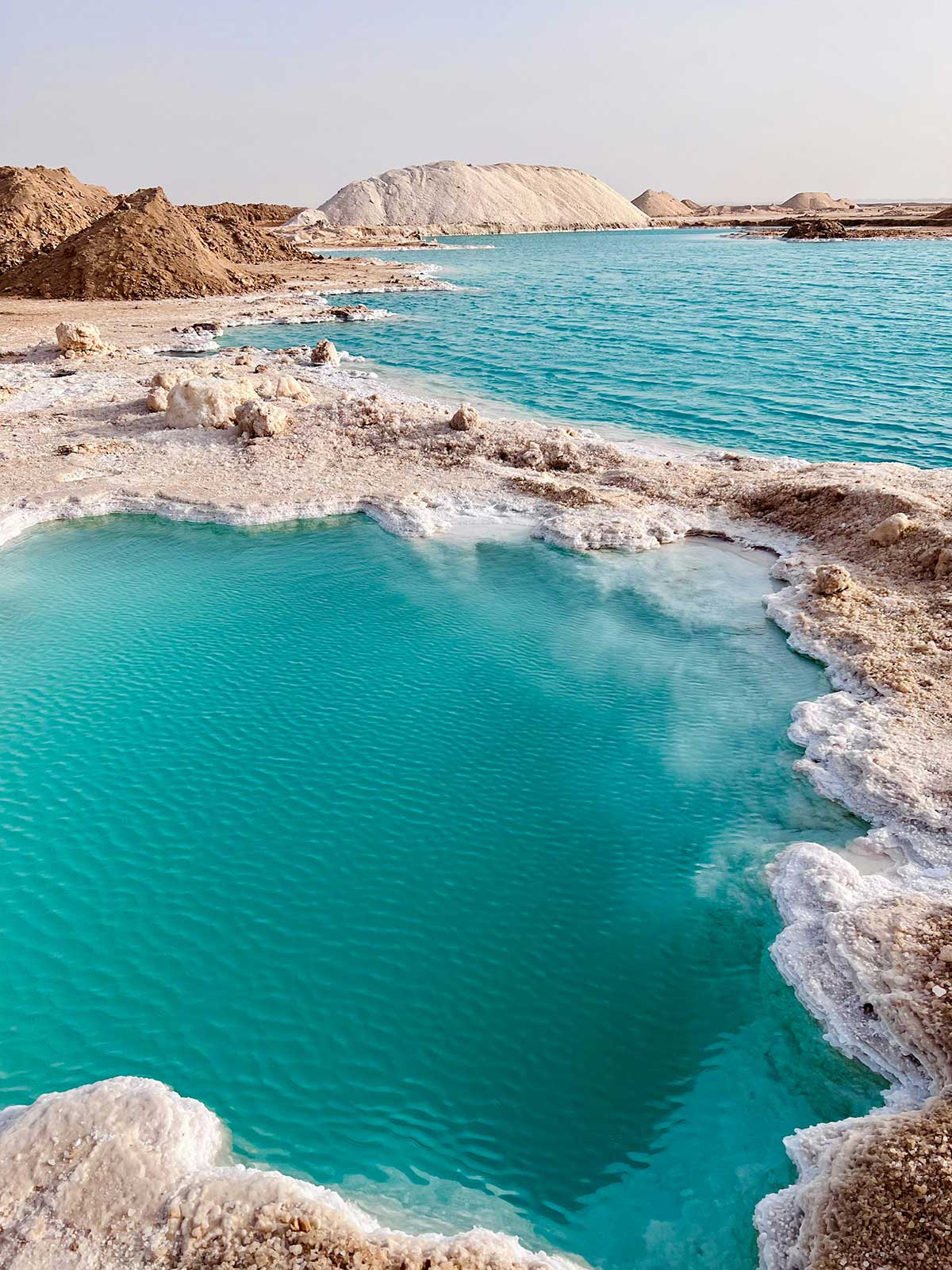treslunasviajes
14 de October de 2024
The 10 Most Incredible Places to Visit in Egypt
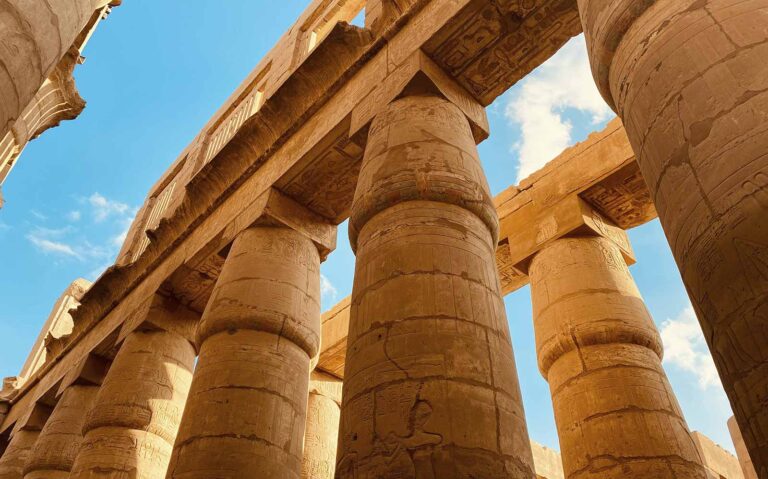
Egypt, a land of ancient civilizations and architectural wonders, is a dream destination for those who wish to explore its rich history and culture. Throughout this article, we will take you on a journey through the 10 most impressive places to visit in Egypt, a country full of contrasts between the old and the modern. Get ready to discover majestic temples, imposing pyramids, and desert landscapes that will take your breath away.
1. The Pyramids of Giza
The first place on our list could only be the Pyramids of Giza, one of the most recognized monuments in the world. These three pyramids —Khufu, Khafre, and Menkaure— are testaments to the grandeur of Ancient Egypt. The Great Pyramid of Khufu, the largest, is one of the Seven Wonders of the Ancient World and the only one still standing. The panoramic view of these massive structures with the Sphinx guarding them is simply unforgettable.
Traveler’s tip:
We recommend visiting early in the morning to avoid the crowds and enjoy a more intimate experience.
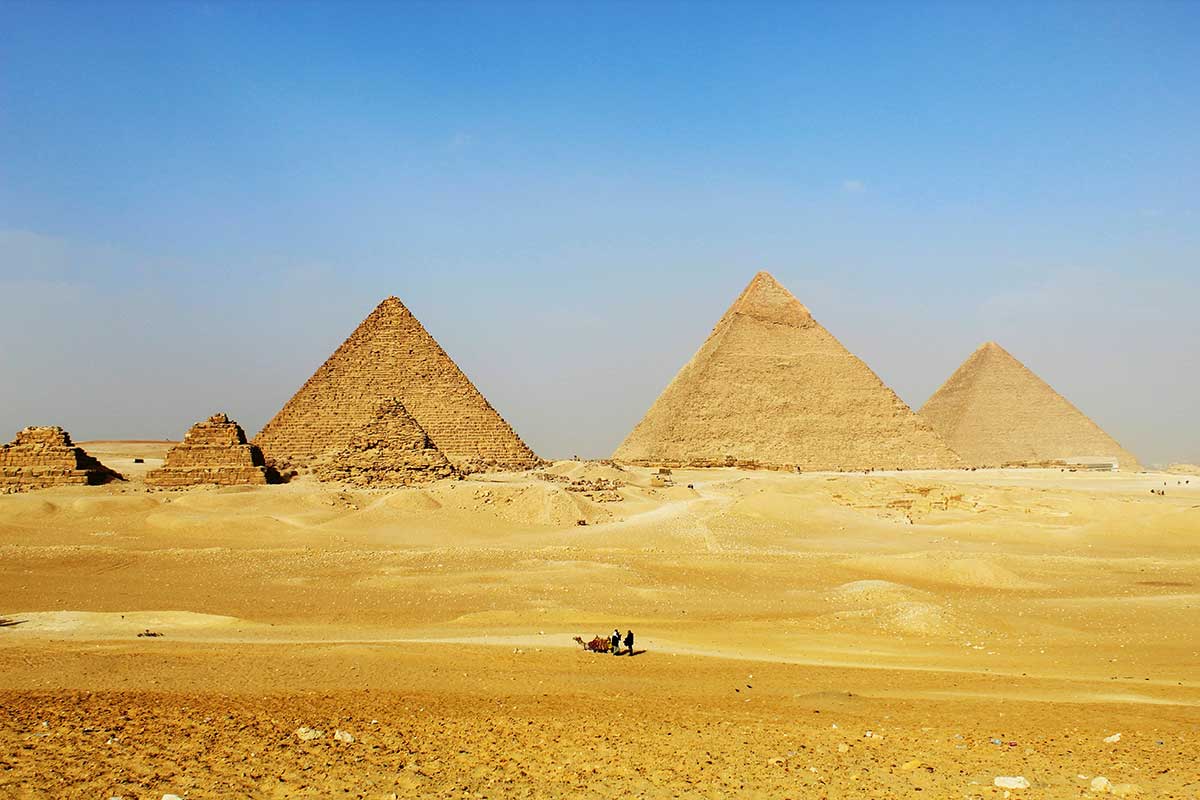
2. The Valley of the Kings
On the west bank of the Nile, near Luxor, lies the legendary Valley of the Kings, where the pharaohs of the New Kingdom were buried in spectacular tombs. This is where the tomb of Tutankhamun was discovered in 1922, one of the most important archaeological discoveries in history. Although many tombs have been looted over the centuries, their interior decoration, which includes hieroglyphs and religious scenes, remains impressive.
Fun fact:
Some tombs, like that of Ramses VI, have passages that extend up to 100 meters deep.
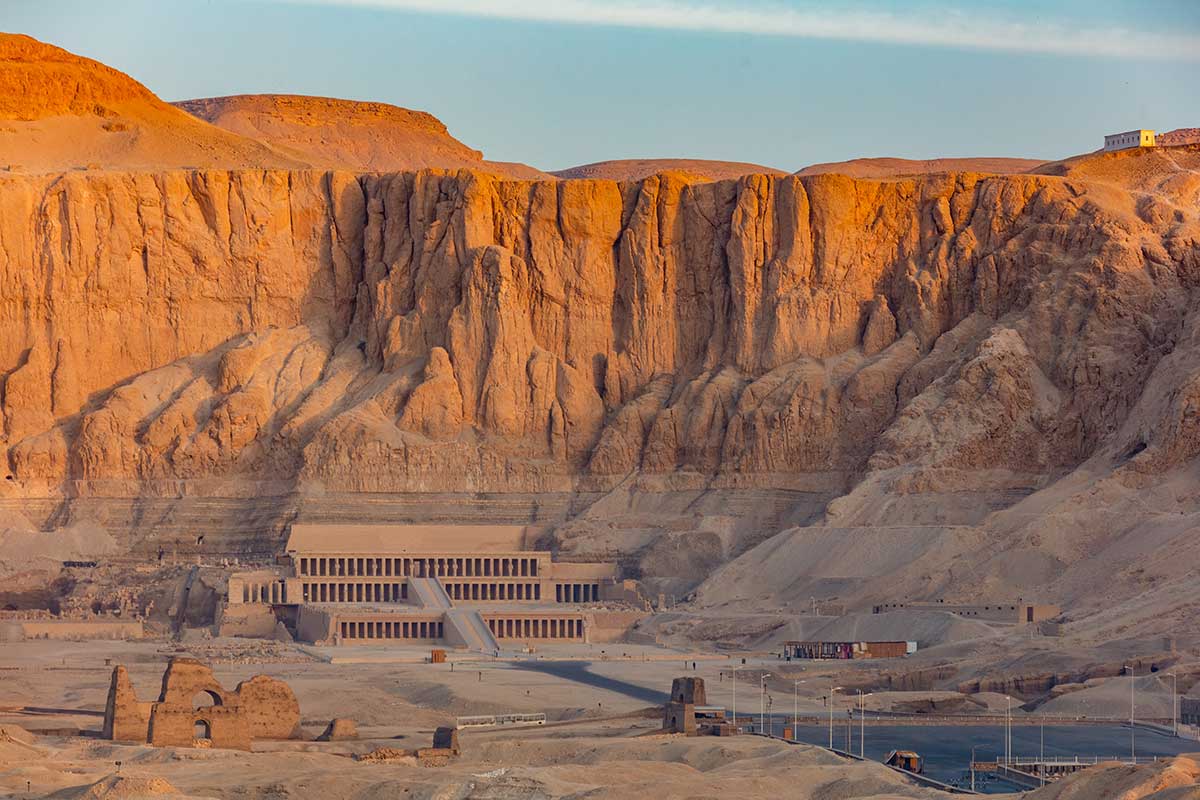
3. The Temple of Karnak
The Temple of Karnak is one of the largest religious complexes ever built. Located in Luxor, it is known for its Hypostyle Hall, where 134 colossal columns rise, seemingly touching the sky. Karnak is a marvel of ancient engineering, where each pharaoh left their mark by building new sections or expanding existing ones. Walking through its avenues lined with sphinxes feels like travelling back in time and experiencing the power and divinity that the ancient Egyptians attributed to their gods.
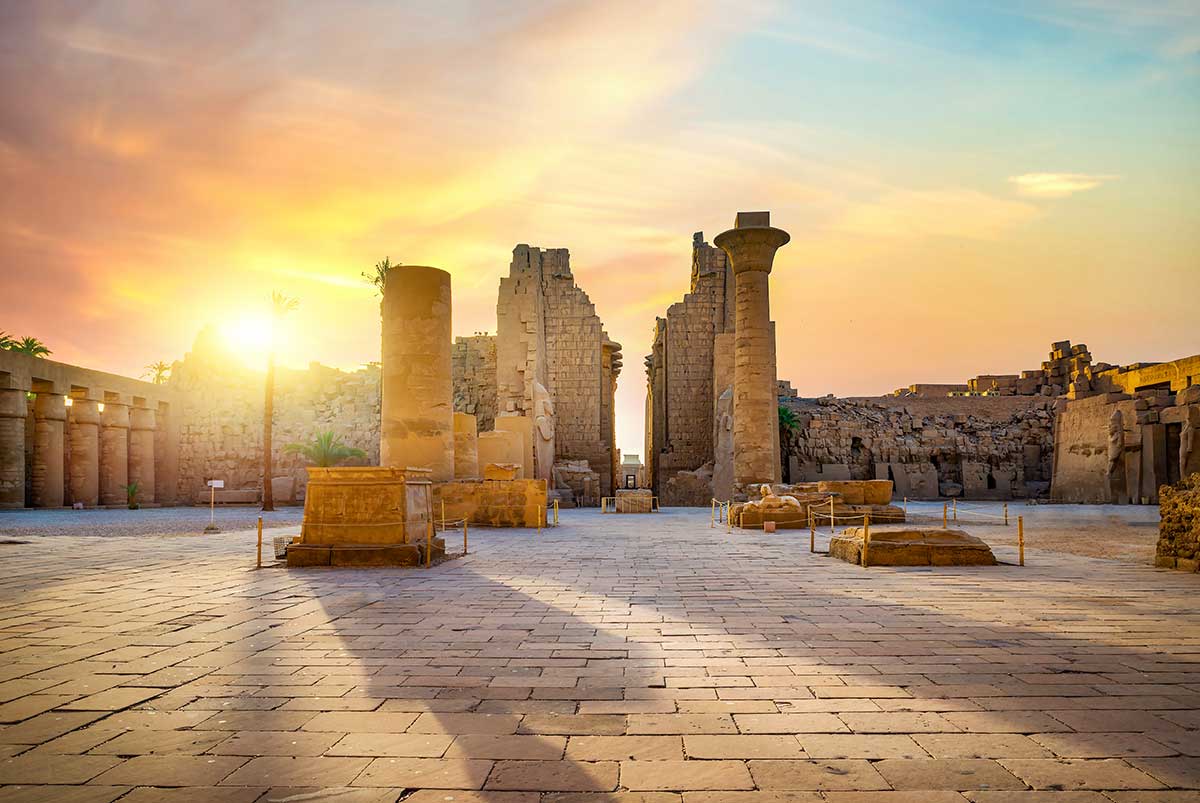
4. Abu Simbel
In the far south of Egypt, near the border with Sudan, lie the impressive temples of Abu Simbel, carved into the rock during the reign of Ramses II. The gigantic statues of the pharaoh at the entrance of the main temple symbolize his power and dominance over Nubia. Additionally, the temple is designed so that twice a year, the sun illuminates the statues inside, a phenomenon that continues to fascinate visitors and astronomers.
Must-see:
The experience of witnessing this solar phenomenon, known as the “solar miracle,” where the sun’s rays illuminate the statues, occurs on October 22 and February 22.
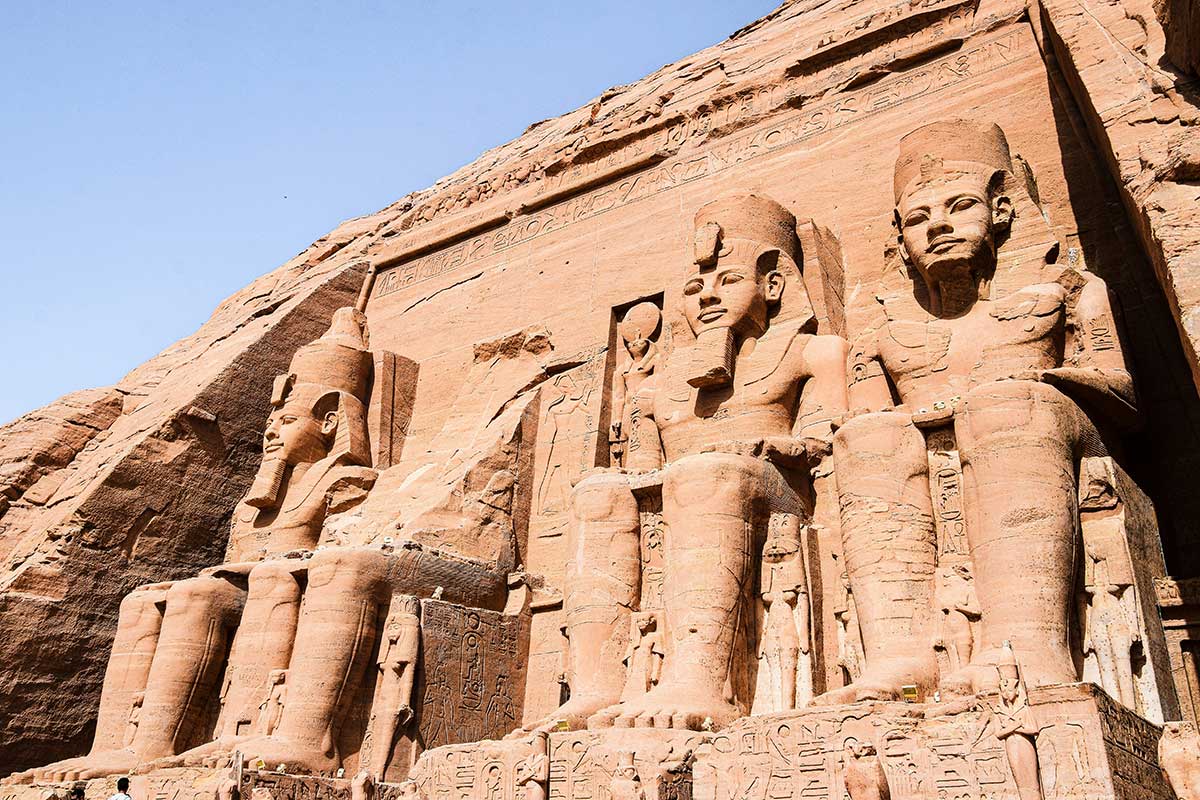
5. The Egyptian Museum in Cairo
The Egyptian Museum houses the most extensive collection of Egyptian antiquities in the world. Among its thousands of artefacts, the treasure of Tutankhamun’s tomb stands out, including his famous solid gold funerary mask. Touring this museum is a living history lesson, where each piece tells a part of Egypt’s vast and complex past. Many of these items are expected to be transferred to the Grand Egyptian Museum, an ultra-modern facility near the Pyramids of Giza.
Extra tip:
Dedicate at least half a day to explore the most important galleries and not miss any of the Ancient Egyptian treasures.
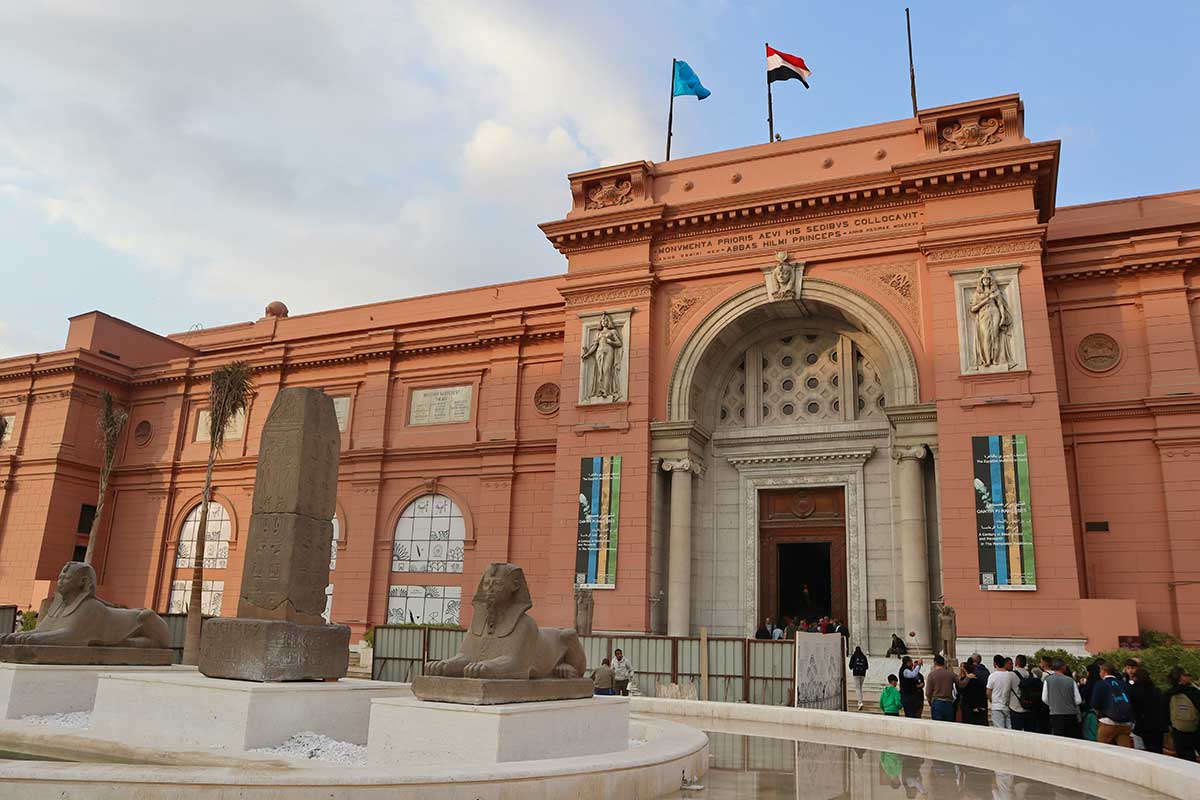
6. The Temple of Hatshepsut
The Temple of Hatshepsut is an architectural masterpiece built in honour of the only female pharaoh who ruled Egypt for a long period. This funerary temple is located near the Valley of the Kings and is notable for its terraced design that blends with the rocky cliff behind it. Queen Hatshepsut is remembered as one of Egypt’s most successful rulers, and her temple reflects the grandeur of her reign.
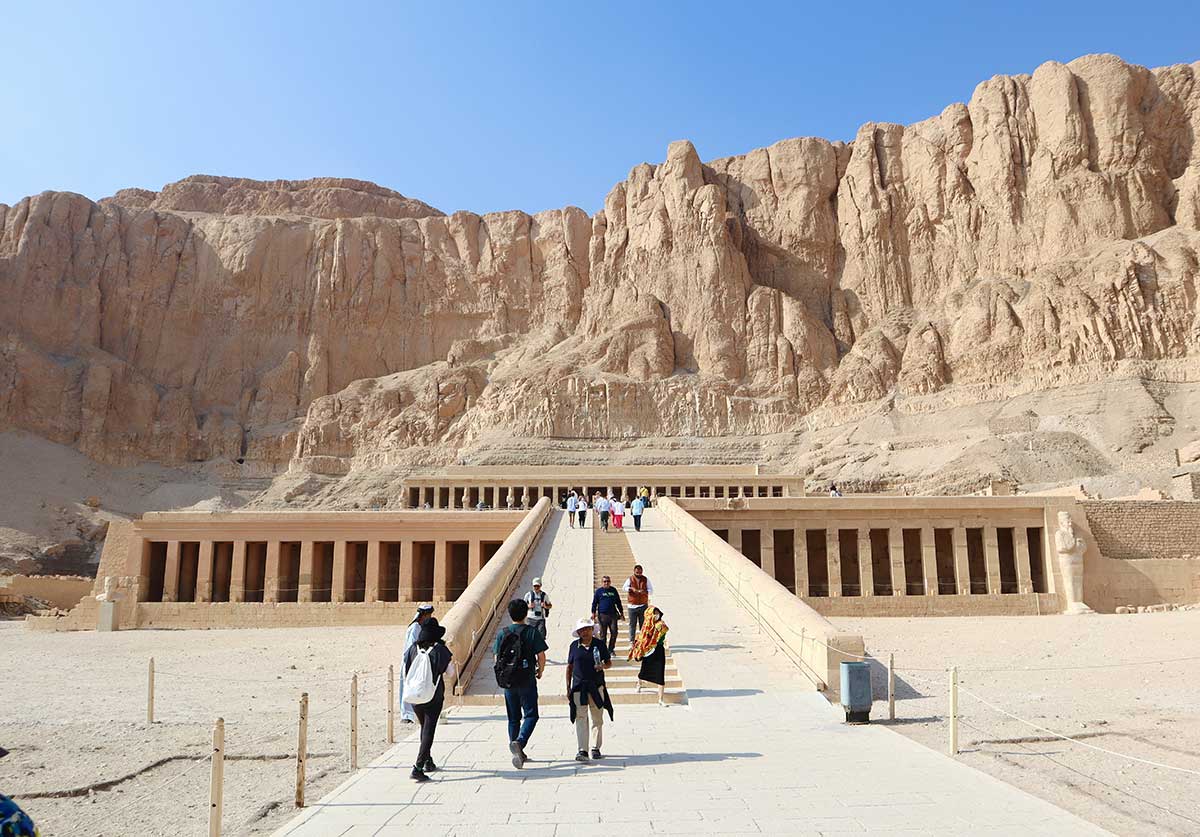
7. Alexandria and its Library
The city of Alexandria is famous for its Greco-Roman history and for being the home of one of the largest libraries of the ancient world, the Library of Alexandria. Today, the modern Bibliotheca Alexandrina is a renowned cultural center that pays tribute to its predecessor. The city also features historical sites such as the Citadel of Qaitbay and the National Museum of Alexandria, offering a glimpse into the glorious past of this coastal region.
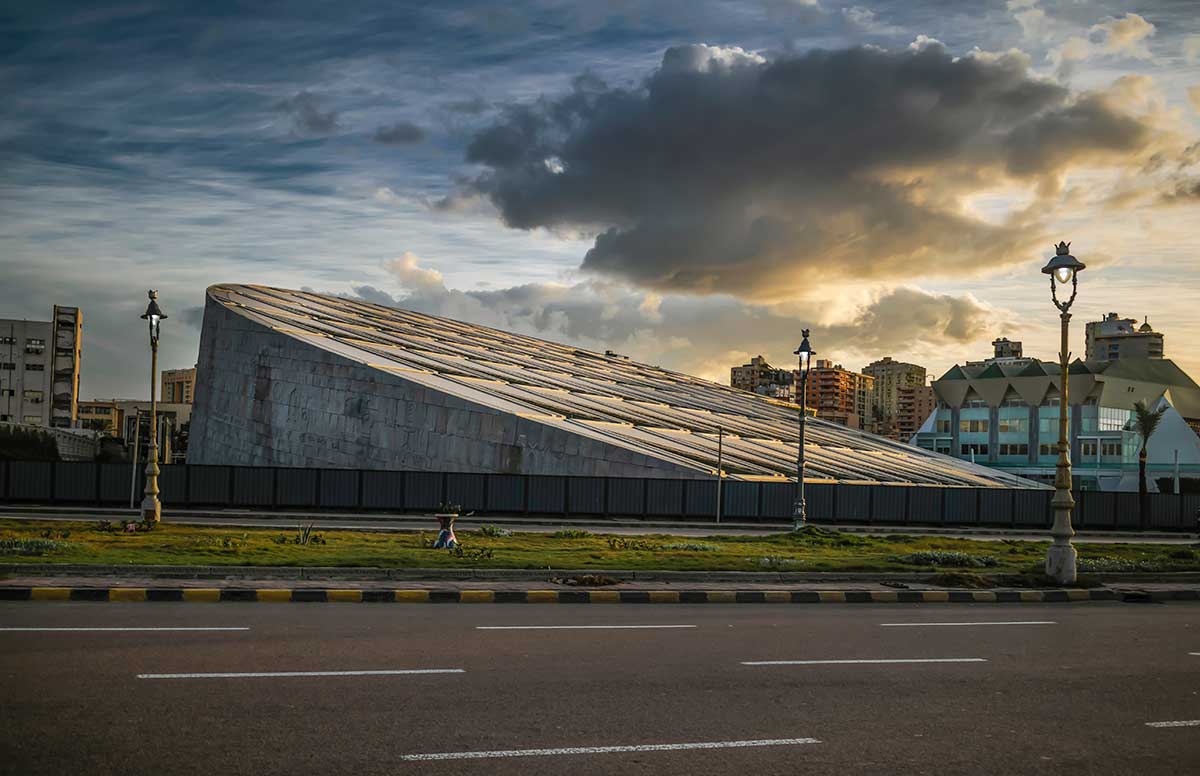
8. The White Desert
For nature lovers, the White Desert offers a surreal landscape that seems taken from another world. Located in the western part of Egypt, this desert owes its name to the white limestone formations that have been sculpted by erosion over millennia. These strange formations, often resembling mushrooms or fantastic creatures, create a unique and mystical atmosphere, perfect for a desert adventure.
Recommended activities:
Exploring the desert on a 4×4 excursion or camping under the stars are unforgettable experiences for visitors.
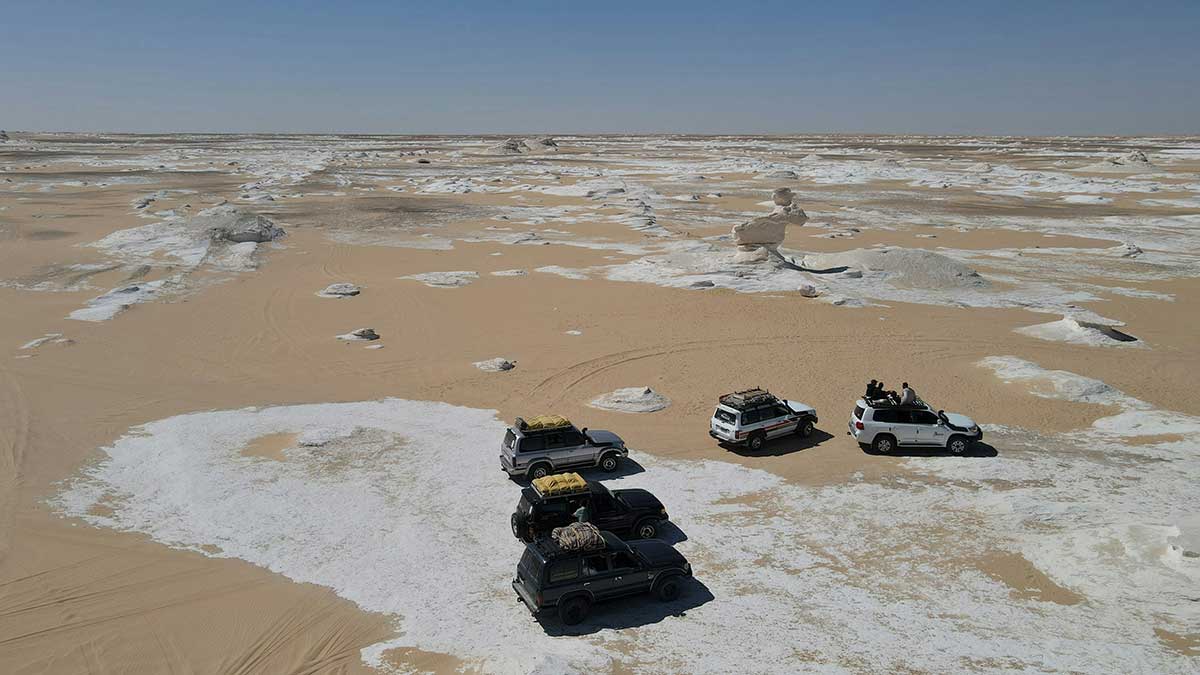
9. The Temple of Luxor
The Temple of Luxor, located on the east bank of the Nile, is another of Egypt’s great monuments. This temple is dedicated to the god Amun-Ra and was the center of the most important religious festivities of the ancient city of Thebes. One of the most impressive features of the Luxor Temple is its avenue of sphinxes that connects with the Karnak Temple, a monumental walk that has been recently restored and allows you to imagine the grandeur of ancient Thebes.
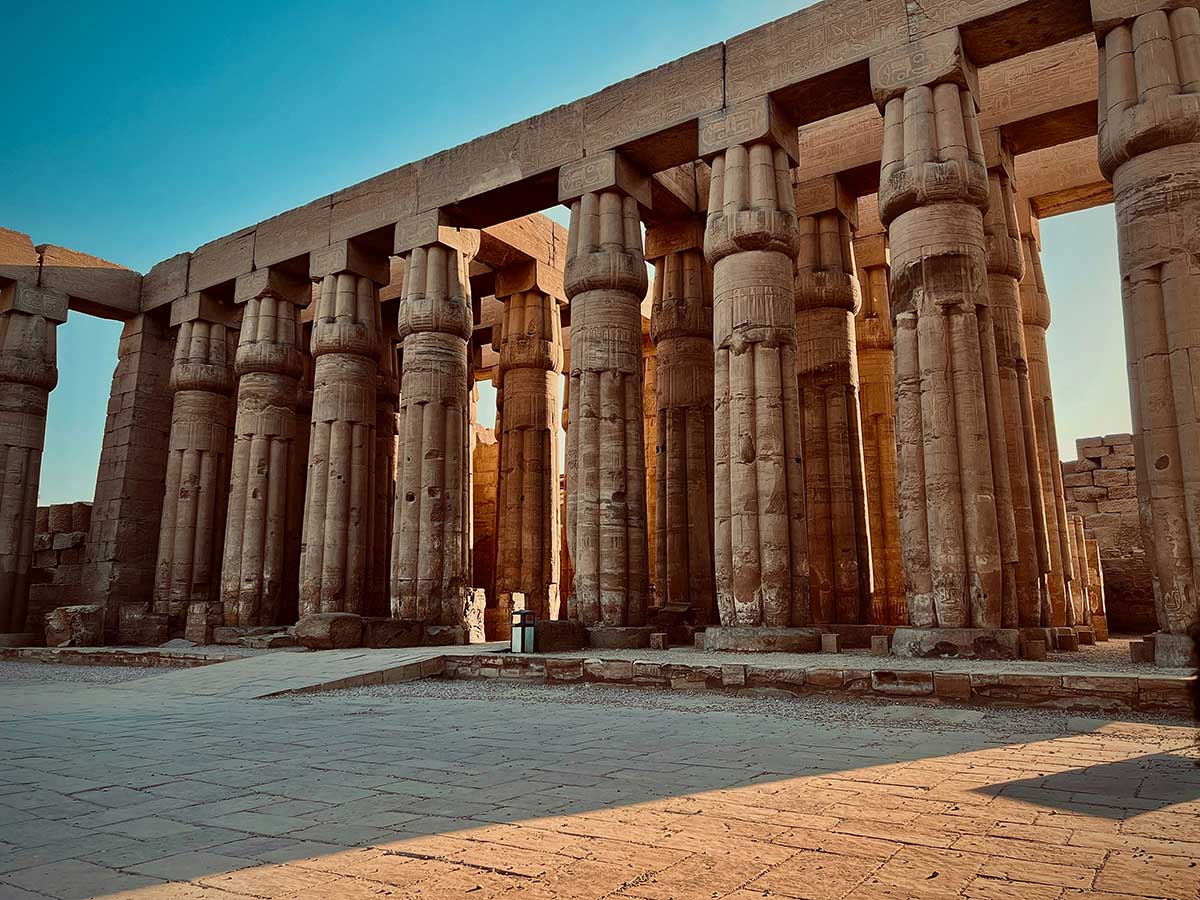
10. The Siwa Oasis
Located in the heart of the Western Desert, the Siwa Oasis is a place of peace and tranquillity that contrasts with Egypt’s bustling urban centers. This oasis is famous for its palm groves, freshwater springs, and historical ruins, such as the Temple of the Oracle, where it is said that Alexander the Great received a prophecy about his destiny. Siwa offers an authentic and remote experience for those seeking a deeper connection with Egypt’s nature and history.
Special recommendation:
Explore the surroundings of the oasis by bicycle and enjoy its hot springs, which are perfect for relaxing after a day of exploration.
